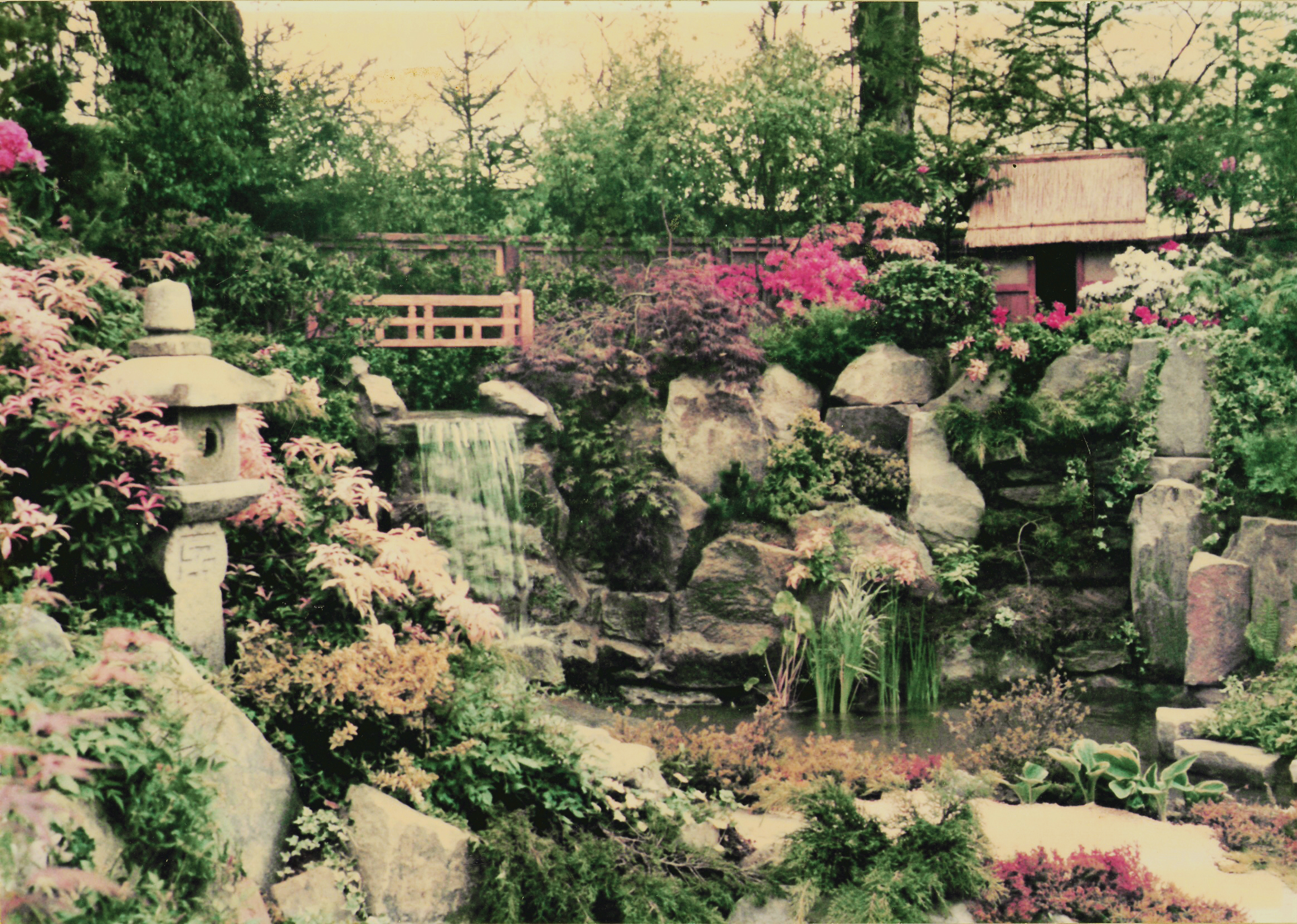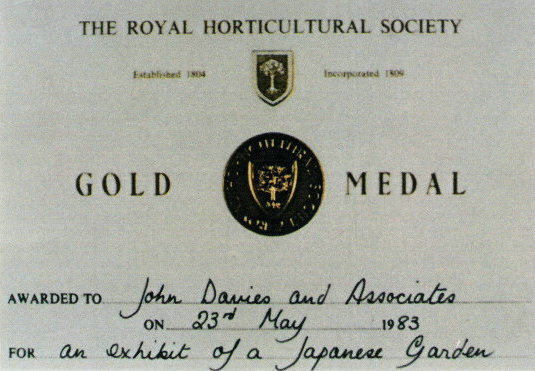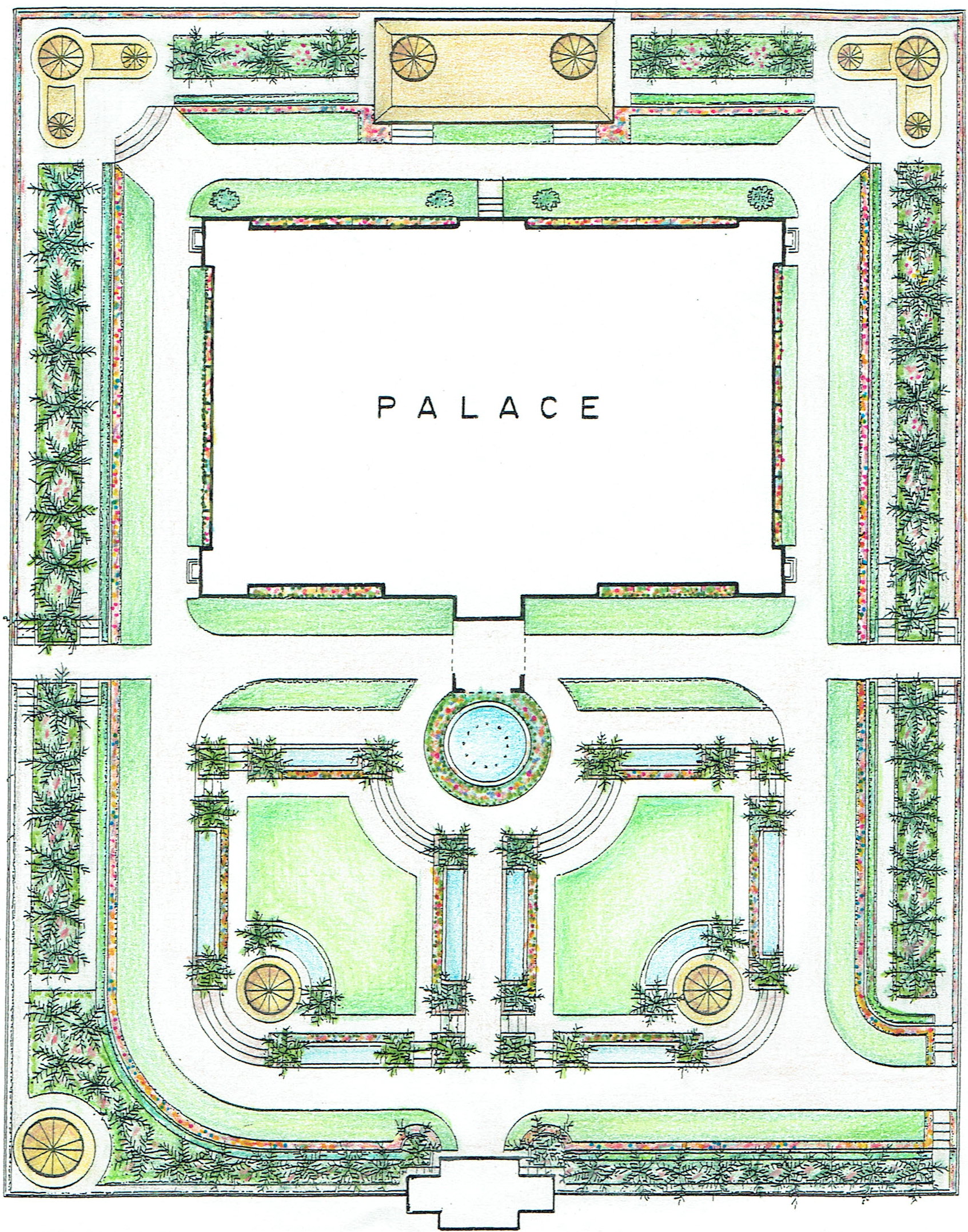Hello, my name is John A. Davies, principal of John Arthur Davies SPC, a landscape consultancy rooted in horticulture and registered in the Kingdom of Bahrain since 1994. This is my first attempt at writing a blog and I was spurred to do so mainly by two factors – one being the opportunity offered by blogging to gain wider exposure for my practice (www.johnadavieslandscapes.com) on a global level; secondly and most importantly, the platform offered by blogging to enable me to discuss the spiritual aspect which informs all of my work – in other words, ‘that which makes me tick.’
Beautiful State of Being
Starting with the second factor, ‘that which informs all my work;’ this is a state of being or consciousness from which I sensed I had become estranged when, as a child of six or seven years of age, I found myself standing bewildered in my school playground and repeating the words neti, neti, neti. It is only relatively recently that I came to learn that it is a Sanskrit phrase meaning not this, not this, not this; and certainly that was my experience at the time, for I felt that my surroundings were alien and not my real home. That feeling of wanting to return ‘home’ has remained with me since and when I say it informs all my work, what I am trying to do, through its urgent prompting, is to provide portals in the form of gardens and landscapes through which others might experience a beautiful state of being.
Please the Eye, Gladden the Heart and Nourish the Soul
While I have always been driven to give of my best, and thereby provide pleasure through the creation of gardens and landscapes, it was only after meeting Mrs. Doris Dufour Henty, a wonderful lady who introduced me to the significance of flowers in terms of healing and as the smile of the divine, that I saw gardens and landscapes as conduits or portals to altered or higher states of consciousness. A Christian Science practitioner and healer, Mrs. Henty had created a pavement garden in front of her home in Mulberry Walk, Chelsea, London, largely for the benefit of visitors and passers-by (see image below).

It was my task to maintain the pavement garden and change the plants according to the seasons. Whenever I tended the garden in the late 1960s and 1970s passers-by would invariably comment to the effect that the scene pleased their eyes and gladdened their hearts, sentiments which eventually became our philosophy – to please the eye, gladden the heart and nourish the soul.
As an aside, Mulberry Press which publishes Mrs. Henty’s book ‘Addresses and Other Writings on Christian Science’ appears to have been named after Mulberry Walk, the street in which she lived until her passing and thus possibly obliquely in her honour. As a further aside the ground occupied by Mulberry Walk once formed part of the orchard on Thomas More’s estate and a mulberry tree reputedly dating from that time (late 15th Century/early 16th Century) stood in Mrs. Henty’s rear garden. Thomas More wrote ‘Utopia,’ a treatise in which he describes a perfect world, several of the principles of which accord with our philosophy, to please the eye, gladden the heart and nourish the soul.
Garden on a Japanese Theme
While visiting the 1982 Chelsea Flower Show, a friend suggested that I exhibit a garden the following year; the idea caught my imagination and from that moment I set about exploring concepts. The concept finally chosen was based on a Japanese theme inspired in part by my interest in Buddhism; also by a small basement garden we had designed and constructed for a Japanese – American business man and whose wife afterwards informed me that the garden (see image) was a source of peace as well as inspiration for her husband in his business affairs. In addition the design of the Chelsea Show garden was influenced by James Hilton’s book ‘Lost Horizon,’ which featured Shangri-La, a secret lamasery offering longevity and rejuvenation set in the Himalayas.

From a commercial point of view I approached Japanese companies in the hope of securing sponsorship; however, only one responded and this with an offer of BGP500.00; while this offer was appreciated, it represented only a tiny fraction of the projected cost of constructing the garden and, besides, the offer was on condition that a tractor be included in the exhibit, which was unacceptable. I decided to finance construction of the exhibit myself.
In the event the garden was a great success. Nourished by the spirit of the garden, visitors sought me out to say that they had experienced a deep-sense of well-being; and Gardeners’ News in the Lady magazine described it as “…a garden to draw the lines from every furrowed brow leaving you at peace with the world and sinking into its beauty.” Thus the garden was entirely in accord with our philosophy.

During construction the exhibit was visited by a number of individuals who said they ‘smelt’ gold and sure enough it was awarded a gold medal, thanks to all members of the team involved in the creation of the exhibit.


Some members of the team
From right to left, Don Miller, architect, Bill Brown, master stone mason, Duncan McKenzie, marketing officer, Janice Petersen, secretary, and myself, designer. Photo taken at dusk.
Other members of the team, photographs of whom regrettably appear to have been lost were Terry Anderson, landscape architect; Ray Cheeseborough, landscape designer and master stone mason; and Stanley Cheeseborough, master landscape craftsman.
West Africa
While involved with the garden for the Chelsea Show, I had been invited to design a villa garden in Nigeria for the Grail Movement, a movement dedicated to guiding seekers to realization and awareness of God. The Movement had been inspired by the work of Oskar Ernst Bernhardt who, in the 1930s under the pen name Abdrushin, had written a book entitled In The Light of Truth: The Grail Message. Abdrushin is derived from Persian and means servant of The Light.
The head of the Movement in Nigeria, Chief Adeyemi O. Lawson, informed me that I had been chosen by higher powers to design the garden and gave me a copy of The Grail Message which I was to read before commencing the design-work, his aim being that I would absorb the essentials of the Message on a subliminal level and reflect them in the design of the garden.
He had advised me that elementals would help in the design and construction of the garden. I recall thinking at the time that perhaps I might be entering the world Shakespeare depicted in A Midsummer Night’s Dream. Although I was not aware of any elemental involvement, I knew of the Findhorn Community where on a bleak, windswept aspect of the Moray Firth of Scotland, a remarkably lush garden had been created with the help of nature spirits (devas); also, being familiar with the philosophy of Rudolf Steiner, I did not discount the chief’s statement. This was said so matter-of-factly that I received the impression that he was aware of both the physical world and invisible world at the same time – in other words, the invisible was as real to his senses as the physical.

The garden design (see plan below) was influenced by the layout of the villa which features small inner gardens as integral elements, making it possible to establish an organic relationship with the surrounding areas. Thus the internal gardens correspond with the informal island grouping immediately outside the villa; these gradually cease to be islands as they move away, as it were, from the villa and merge with the surrounding forest. Informal walks cut through the vegetation and terminate in forest glades. Many of the island groupings are designed as semi-enclosures for displaying Nigerian tribal art as symbols of national unity. This was a healing gesture in reference to the savage civil war which had afflicted the country in the late 1960s.

Sadly, negative forces are again afflicting the country. I must say, it is the fact that such negative forces are at large in the world today, including here in the Middle East, which has prompted me to write or talk from a spiritual or philosophical perspective about my work in the hope it might contribute towards neutralizing such negativity.
Returning to the garden in question, the only formal aspect of the design is the main drive lined with a double row of the Cuban royal palms (Roystonia regia); these being naturally stately offer a dignified approach and anticipates the status of the villa. The main drive is terminated by the porte-cochere of the villa in front of which stands a sculpture of a unicorn (see bird’s eye view below). Although I say above that I was not aware of elementals, the fact that the unicorn is included indicates otherwise. The unicorn symbolizes purity and its horn is said to defend Truth.

Evidently, it became extinct on this gross level of matter as it was unable to gain entry into the Ark and perished in the Flood. However the chief said it exists in another dimension and, therefore, being of a finer form of matter, it may be said to be elemental.
Some years later the chief wrote to me saying that the garden was a great success.
Middle East
Around the time of both the Chelsea Show and Nigeria projects, I was approached by the managing director of Blanchards, an interior design company with offices and retail premises in Sloane Street, London. He asked whether I would be interested in designing the garden for a palace project in the Arabian Gulf, to which, of course, I responded in the affirmative. The design brief called for an informal scheme in the English landscape style; however, I felt the traditional architecture of the palace and the ‘spirit of place’ demanded a more formal approach.
Typically an Islamic garden, which is symbolic of paradise, is depicted as a square divided into four equal squares, each representing an element of creation; i.e., earth, air, fire and water, with a central fountain symbolizing the life force and the source of the four rivers which nourish the garden. The rivers are usually represented by canals or rills.


It will be seen from the above plan that, while the circular fountain symbolizing the life force is evident, the ‘rivers’ are represented by paths radiating from it. Only three ‘rivers’ are indicated, the third, being immaterial, passes through the porte-cochere and on through the palace. Similarly, only two squares are apparent, the other two, also being immaterial, are occupied by the palace. The garden features eight rectangular canals; these stand for the eight angels which carry the throne of God as stated in the Koran. Two semi-circular canals are also featured; these conform to the circular paved areas which support gazebos. The immaterial or invisible aspects represent the spirit out of which the physical world emerges – the whole; that is, palace and garden representing the unity of heaven and earth.
Following completion of the palace and garden, the Client expressed his appreciation by inviting the principals of the firms involved in the success of the project to a dinner in celebration of the event. It was a wonderful occasion and very gracious of the Client to have expressed his thanks in such a splendid manner. In keeping perhaps with most designers I derive more satisfaction from a Client expressing his or her appreciation than from the monetary reward, though indeed the latter is critically important. However, in terms of design it is the Spirit which guides and in whose service, essentially, I am.
So much more could be written about the above projects, as well as about the members of the teams who contributed towards the success of the projects, for the success of any project depends upon harmonious teamwork. In a future blog I will expand on this and include images of working drawings and photographs of work in progress through to completion.
In writing this blog the pronoun ‘I’ has been used often, though please understand that it is not the small ‘i’ but the big ‘I’ which is expressing itself.
Should you, dear reader, be interested in our services, our particulars are as follows:
John A. Davies SPC
Landscape Consultants
PO Box: 15560
Apartment 109, Building 285
Road 2612, Gudaibiya 326
Manama, Kingdom of Bahrain
The full range of our services may be seen by accessing our website at: www.johnadavieslandscapes.com
Kind regards,
John A. Davies



